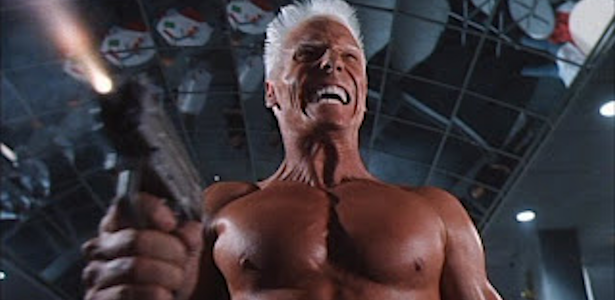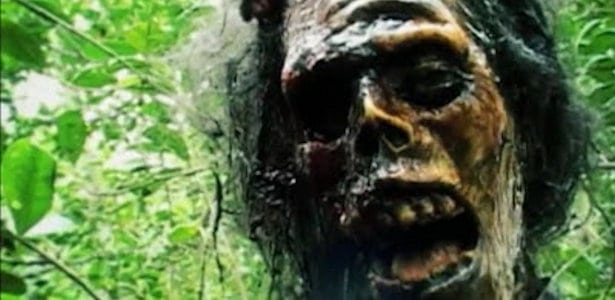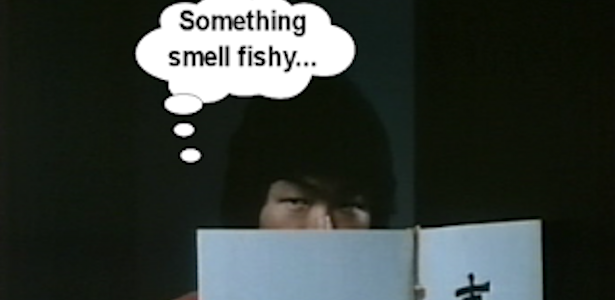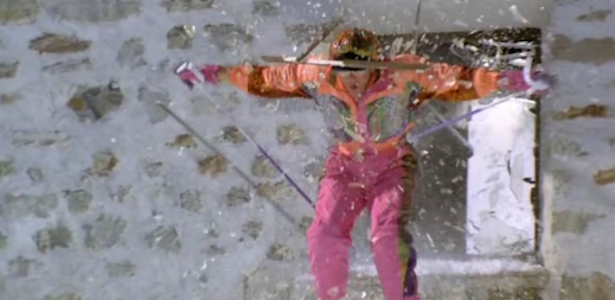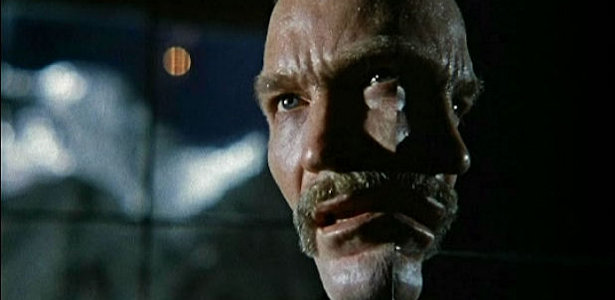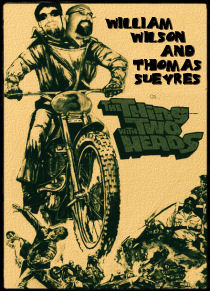Being a (former) wrestling fan sucks. It seems like every other month you will hear about someone dying too young or a legend dying too soon. We got hit with this in the worst way in June and July as the squared circle bid farewell to Dusty Rhodes and Roddy Piper, respectively. I first got into wrestling in the summer of 1985. Seeing as we had just moved to the Mid-Atlantic area, it was only natural that I gravitate toward the N.W.A. (National Wrestling Alliance), the North Carolina-based promotion run by Jim Crockett. While a big N.W.A. fan, my favorite wrestler was still Hulk Hogan so I watched WWF programming when I had the chance (we didn't have cable). And if there was any one fighter who could get under my skin, it was Piper. My blood used to boil when Piper would mock or attack someone on his Piper's Pit segment. Remember, this is when I still thought wrestling was real and the fact that Piper could tear my 10-year-old soul into pieces just with his words was a testament to how great an actor he really was. I lost the wrestling bug when we moved back overseas in 1987, but re-caught it in 1998. By then N.W.A. had become W.C.W. under Ted Turner and I still had a loyalty to this brand. I don't know, maybe because they had actual wrestling versus Vince McMahon's ego show. Anyway, one face I was happy to see back in the ring was Piper's.
It is a generally supported truth that athletes make terrible actors. Seriously, watch 10 out of 10 performances by sports folks and 9.5 of them will be terrible (the .5 awarded solely because Brian Bosworth was in STONE COLD [1991]). The major exception was pro-wrestlers. Maybe because their sport required so much acting and interaction with fans that the transition was smoother. Now don't get me wrong, there are still some horrible pro-wrestling actors (Triple H, for example) but, hell, The Rock is one of the biggest box office draws for a reason (even if I don't like that reason). Now we won't be seeing a wrestler win an Academy Award any time soon, but I'd wager the terror that Abdullah the Butcher (see pic above) struck in me when I was a kid was ten times better than anything Anthony Hopkins did in THE SILENCE OF THE LAMBS (1991).
Anyway, the point is a lot of wrestlers made the great transition to acting and did well. Two who saw success at the same time in the '80s were Piper and Jesse "The Body" Ventura. With both charismatic guys working in this new field, you knew it was only a matter of time before Hollywood threw them together. That happened in the early '90s with the TV pilot TAG TEAM (1991). Wrestling was going through a bit of a cool down phase at this time, but you can almost see some TV exec patting himself on the back as he exclaims, "Wrestling is popular, cop shows are popular. Why not make a cop show with wrestlers?" The ensuing project was independently produced, with co-production duties coming via Touchstone (yes, Disney) Television.
The story focuses on tag team partners Billy "The Body" Youngblood (Ventura) and "Tricky" Rick McDonald, who are introduced preparing for the biggest fight of their careers and they feel like they can beat the Samurai Brothers (played by the WWF tag team The Orient Express). Yes, the show was going with the idea that pro-wrestling matches were legit. Leona Lewis (Shannon Tweed, sporting one of the ugliest outfits I've ever seen), the wife of the boss man Marty, has other plans and tells the duo that if they win that under no uncertain terms they will be "barred for life." Threats ain't got nothing on pride and, after being beaten down via underhanded tactics, our duo rallies back and wins the match. (Side note: this footage was apparently shot at the Los Angeles Sports Arena on March 25, 1990.) Now barred for life, Billy and Rick find themselves looking for jobs (oddly, they live together in a studio apartment decorated with pictures of themselves). After failing at piano movers and human attack dummies for a female defense group (!), they figure they've struck out and head to buy some groceries. And wouldn't you know it, the store is being held up by four robbers and our grapplers use their ring moves to stop them. When the cops arrive, one officer says these guys would make great cops and *ding* a light goes off. Now I'm not judging the intelligence of these characters, but apparently they didn't think very hard (just like the writers) when trying to come up with job ideas.
Before you can yell Steve Guttenberg, Billy and Rick are enrolled in the police academy in a special group singled out for going straight to undercover work. I'm not sure that is how the police system works, but it allows both men to retain their long hair. Chewing at their heels is Lt. Carol Steckler (Robin Curtis) and comedy relief rival Ray Tyler (Phill Lewis). Meanwhile, professional dog walker Rita Valentine (Jennifer Runyon) witnesses two corrupt detectives kill some narcs in an underground parking garage. She identifies the cops in a line up and is assigned around the clock police protection in the form of Hatch (Mike Genovese) and Harrigan (Raymond O'Connor). When Billy and Rick graduate, they find out that Steckler is now Captain Steckler and running the station they are assigned to. Again, I'm not sure that is how the police system works. Anyway, the first assignment of our two pro-wrestling heroes is to assist in the protection of Rita. This is bad news as the two corrupt cops have found her location and decided to off her before she can testify. Do you think these two rookies will save the day?
Originally scheduled for 13 episodes, TAG TEAM (written onscreen as TAGTEAM) might not be the most original idea, but it is a testament to the charisma of both Piper and Ventura. They have a great rapport with each other and both have their moments, both humorous and dramatic. Piper has always been an incredibly underrated actor and you just need to look at the scene where he is fretting about passing an upcoming police test to see how good he can be. The scenario is ripe for over-the-top histrionics and you could imagine how bad this would have been if someone like Hulk Hogan or Randy Savage ("You're under arrest...oh yeaaaaah!") were in either of the main roles. Both guys appear to be doing their own stunts and that is pretty impressive when you see them doing bumps on hard ground. The fight scenes incorporate their wrestling moves well (the supermarket showdown is a highlight), although it is a bit cheesy when emphasis is put on Piper "tagging in" in the final fight. Unfortunately this dynamic pairing was not to be. TAG TEAM got dumped with a one off showing in January 1991. To add insult to injury, it aired right around the time the Gulf War started so it got even less attention than normal. A shame as I totally would have watched the further adventures of Billy and Rick.
It is a generally supported truth that athletes make terrible actors. Seriously, watch 10 out of 10 performances by sports folks and 9.5 of them will be terrible (the .5 awarded solely because Brian Bosworth was in STONE COLD [1991]). The major exception was pro-wrestlers. Maybe because their sport required so much acting and interaction with fans that the transition was smoother. Now don't get me wrong, there are still some horrible pro-wrestling actors (Triple H, for example) but, hell, The Rock is one of the biggest box office draws for a reason (even if I don't like that reason). Now we won't be seeing a wrestler win an Academy Award any time soon, but I'd wager the terror that Abdullah the Butcher (see pic above) struck in me when I was a kid was ten times better than anything Anthony Hopkins did in THE SILENCE OF THE LAMBS (1991).
Anyway, the point is a lot of wrestlers made the great transition to acting and did well. Two who saw success at the same time in the '80s were Piper and Jesse "The Body" Ventura. With both charismatic guys working in this new field, you knew it was only a matter of time before Hollywood threw them together. That happened in the early '90s with the TV pilot TAG TEAM (1991). Wrestling was going through a bit of a cool down phase at this time, but you can almost see some TV exec patting himself on the back as he exclaims, "Wrestling is popular, cop shows are popular. Why not make a cop show with wrestlers?" The ensuing project was independently produced, with co-production duties coming via Touchstone (yes, Disney) Television.
The story focuses on tag team partners Billy "The Body" Youngblood (Ventura) and "Tricky" Rick McDonald, who are introduced preparing for the biggest fight of their careers and they feel like they can beat the Samurai Brothers (played by the WWF tag team The Orient Express). Yes, the show was going with the idea that pro-wrestling matches were legit. Leona Lewis (Shannon Tweed, sporting one of the ugliest outfits I've ever seen), the wife of the boss man Marty, has other plans and tells the duo that if they win that under no uncertain terms they will be "barred for life." Threats ain't got nothing on pride and, after being beaten down via underhanded tactics, our duo rallies back and wins the match. (Side note: this footage was apparently shot at the Los Angeles Sports Arena on March 25, 1990.) Now barred for life, Billy and Rick find themselves looking for jobs (oddly, they live together in a studio apartment decorated with pictures of themselves). After failing at piano movers and human attack dummies for a female defense group (!), they figure they've struck out and head to buy some groceries. And wouldn't you know it, the store is being held up by four robbers and our grapplers use their ring moves to stop them. When the cops arrive, one officer says these guys would make great cops and *ding* a light goes off. Now I'm not judging the intelligence of these characters, but apparently they didn't think very hard (just like the writers) when trying to come up with job ideas.
Before you can yell Steve Guttenberg, Billy and Rick are enrolled in the police academy in a special group singled out for going straight to undercover work. I'm not sure that is how the police system works, but it allows both men to retain their long hair. Chewing at their heels is Lt. Carol Steckler (Robin Curtis) and comedy relief rival Ray Tyler (Phill Lewis). Meanwhile, professional dog walker Rita Valentine (Jennifer Runyon) witnesses two corrupt detectives kill some narcs in an underground parking garage. She identifies the cops in a line up and is assigned around the clock police protection in the form of Hatch (Mike Genovese) and Harrigan (Raymond O'Connor). When Billy and Rick graduate, they find out that Steckler is now Captain Steckler and running the station they are assigned to. Again, I'm not sure that is how the police system works. Anyway, the first assignment of our two pro-wrestling heroes is to assist in the protection of Rita. This is bad news as the two corrupt cops have found her location and decided to off her before she can testify. Do you think these two rookies will save the day?
Originally scheduled for 13 episodes, TAG TEAM (written onscreen as TAGTEAM) might not be the most original idea, but it is a testament to the charisma of both Piper and Ventura. They have a great rapport with each other and both have their moments, both humorous and dramatic. Piper has always been an incredibly underrated actor and you just need to look at the scene where he is fretting about passing an upcoming police test to see how good he can be. The scenario is ripe for over-the-top histrionics and you could imagine how bad this would have been if someone like Hulk Hogan or Randy Savage ("You're under arrest...oh yeaaaaah!") were in either of the main roles. Both guys appear to be doing their own stunts and that is pretty impressive when you see them doing bumps on hard ground. The fight scenes incorporate their wrestling moves well (the supermarket showdown is a highlight), although it is a bit cheesy when emphasis is put on Piper "tagging in" in the final fight. Unfortunately this dynamic pairing was not to be. TAG TEAM got dumped with a one off showing in January 1991. To add insult to injury, it aired right around the time the Gulf War started so it got even less attention than normal. A shame as I totally would have watched the further adventures of Billy and Rick.




